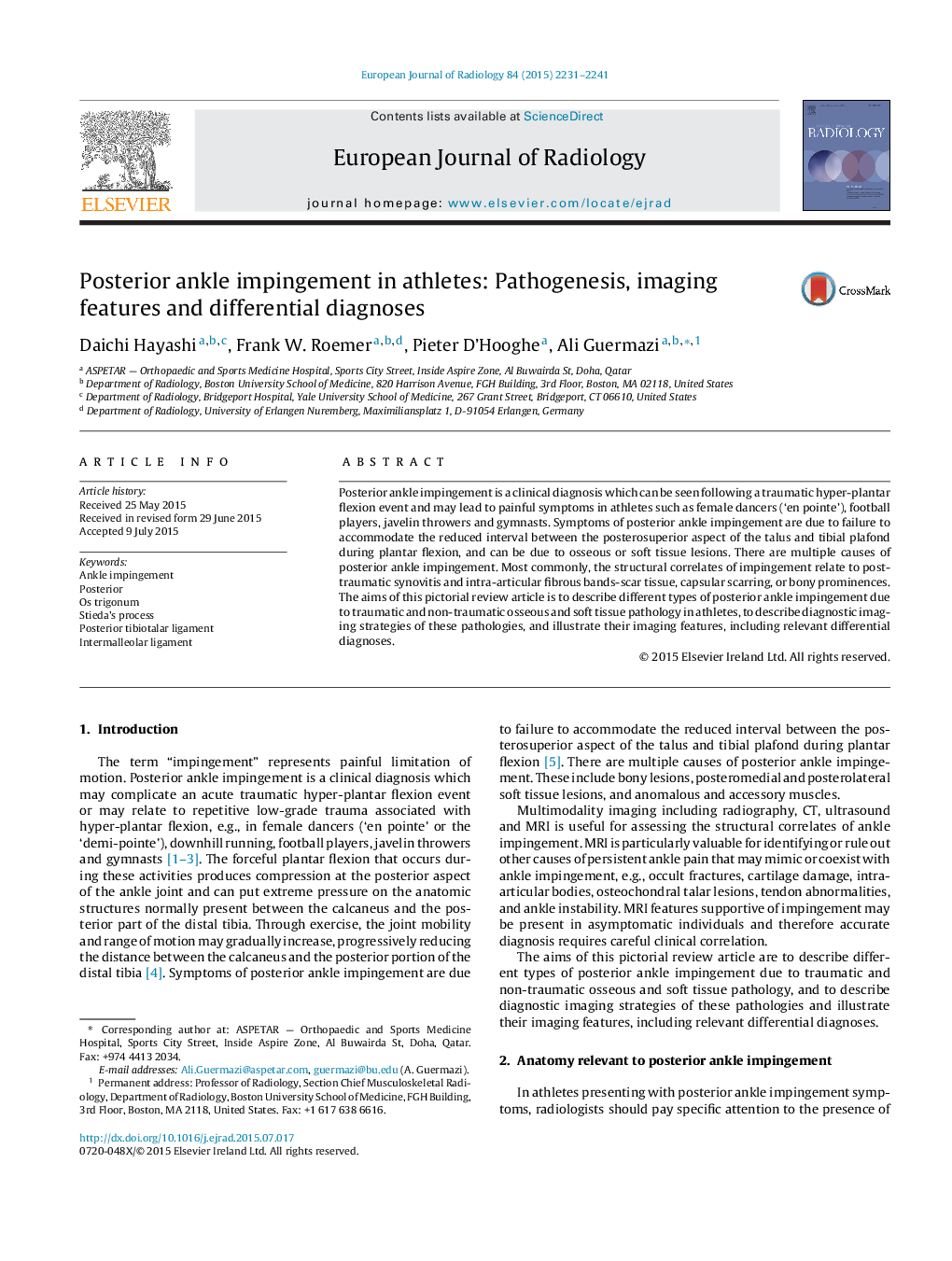| کد مقاله | کد نشریه | سال انتشار | مقاله انگلیسی | نسخه تمام متن |
|---|---|---|---|---|
| 4225022 | 1609748 | 2015 | 11 صفحه PDF | دانلود رایگان |
• Posterior ankle impingement symptoms are due to bony or soft tissue lesions.
• MRI is particularly useful in confirming the diagnosis and planning therapy.
• Triplanar imaging with at least one FS T2W/PDW sagittal sequence is needed.
• Contrast-enhanced MRI is ideal for differentiating synovitis from effusion.
• Nontrauma differentials include posterior capsulitis, gout and rheumatoid arthritis.
Posterior ankle impingement is a clinical diagnosis which can be seen following a traumatic hyper-plantar flexion event and may lead to painful symptoms in athletes such as female dancers (‘en pointe’), football players, javelin throwers and gymnasts. Symptoms of posterior ankle impingement are due to failure to accommodate the reduced interval between the posterosuperior aspect of the talus and tibial plafond during plantar flexion, and can be due to osseous or soft tissue lesions. There are multiple causes of posterior ankle impingement. Most commonly, the structural correlates of impingement relate to post-traumatic synovitis and intra-articular fibrous bands-scar tissue, capsular scarring, or bony prominences. The aims of this pictorial review article is to describe different types of posterior ankle impingement due to traumatic and non-traumatic osseous and soft tissue pathology in athletes, to describe diagnostic imaging strategies of these pathologies, and illustrate their imaging features, including relevant differential diagnoses.
Journal: European Journal of Radiology - Volume 84, Issue 11, November 2015, Pages 2231–2241
